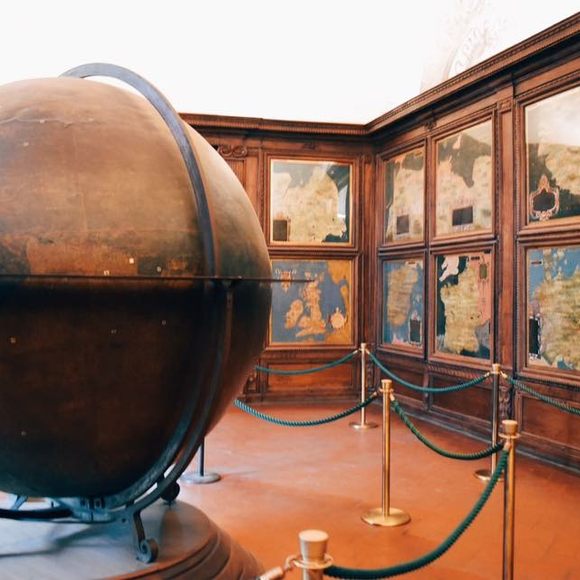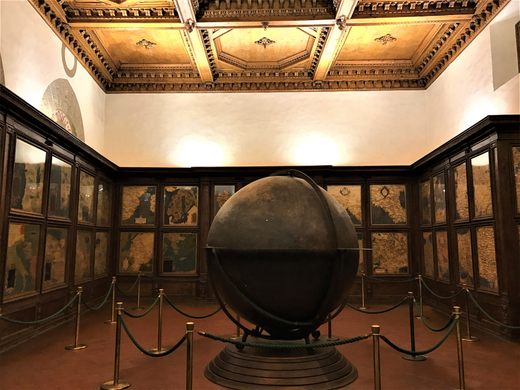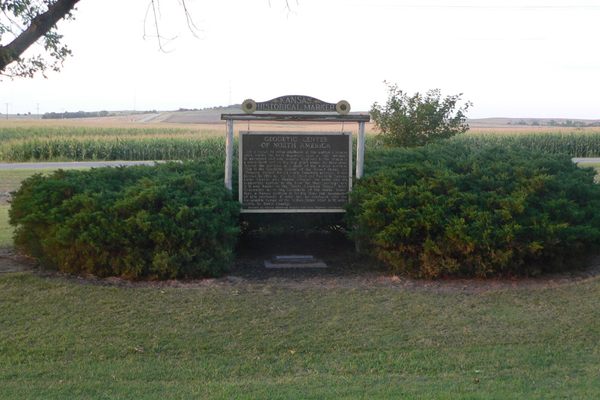Medici Hall of Maps (Sala delle Carte Geografiche)
Over 50 exquisite hand-painted Renaissance maps decorate a Medici storage room.
When Giorgio Vasari undertook the restoration of the grand old Palazzo della Signoria, now known as the Palazzo Vecchio, he envisioned a new room adorned with maps of Italy and the known world, portraits of all of the great minds of the era, and illustrations of exotic plants and animals from far off lands.
Vasari made plans for two enormous globes - one of the earth, another of the heavens - to lower from the ceiling onto bases so perfectly designed, the lightest touch would send them spinning. The room he made these elaborate plans for was not the entry hall, or the offices, or the grand assembly room. It was instead the Guardaroba Nuevo, or “new storeroom,” a new addition to the many storage rooms that held the Medici family treasures in order.
When Cosimo I de’ Medici, the Duke of Florence, was elected at the young age of 17, he was an unknown upstart. Raised largely in the countryside without the elaborate urban education and training his predecessors had enjoyed, the new duke turned to Vasari to help him establish his legacy.
In the end, Cosimo I “the Great” became one of history’s great art patrons, giving Florence the Uffizi, the Vasari Corridor over the Ponte Vecchio, and a re-vitalized Palazzo della Signoria.
The Palazzo Vecchio was first built in 1299 as the seat of power in Florence. Cosimo I charged Vasari with retrofitting the palace to meet the needs of the Renaissance empire. In 1563 they employed the gifted Italian priest, mathematician and mapmaker Ignazio Danti to complete the vision of a grand hall of maps.
In the room now known as the Sala delle Carte Geografiche (Hall of maps) on the second floor of the Palazzo Vecchio, 54 maps decorate cabinet fronts, alongside 237 portraits of luminaries of the Renaissance. Inspired largely by the illustrated Renaissance edition of Ptolomy’s “Geographica” as well as new innovations in cartography by Mercator and Orelius, Danti painted the first 31 maps between 1563-1575, followed by another 23 maps created by Stefano Bonsignori, granducal cosmographer to Cosimo I’s son, Francesco I de’ Medici. The Santucci armillary sphere (now at the Florence Museum of the History of Science) once also was displayed Sala delle Carte Geografiche, along with a second, earlier armillary sphere that is now lost.
The room is sometimes referred to as the Sala del Mappamundo, after the huge terrestrial globe also created by Danti that now sits in the middle of the room. Although the original vision of it descending from the ceiling never came to pass, it was built on a specially designed base, and it was, in his own words “moved in any direction by the touch of a single finger.” The second celestial globe was never completed. Unfortunately an ill-advised move to the Uffizi in later years left the existing globe subject to the elements, and it is now much darkened and weathered. Perhaps most sad is that with its original base lost, it no longer moves with the smooth motion that made Danti so proud.
Years after his work in Florence, Danti was called to Rome where he created the Vatican’s vast Gallery of Maps the last of his great cartographical works.
Know Before You Go
Sala delle Carte Geografiche is located on the second floor of Palazzo Vecchio.
As of Summer 2023, the room is under restoration, but is still open to visitors.
Community Contributors
Added by
Edited by
Plan Your Trip
The Atlas Obscura Podcast is Back!






























Follow us on Twitter to get the latest on the world's hidden wonders.
Like us on Facebook to get the latest on the world's hidden wonders.
Follow us on Twitter Like us on Facebook